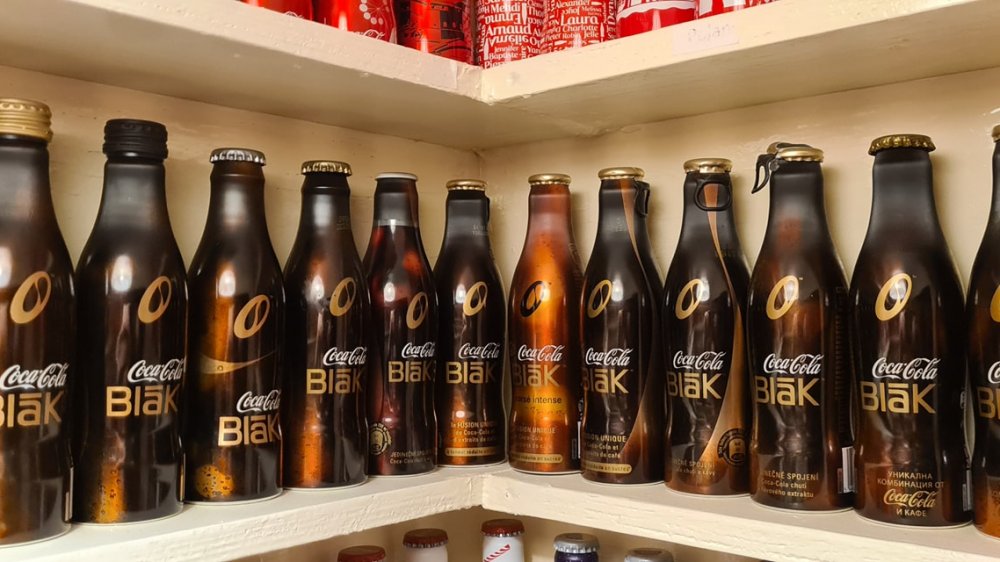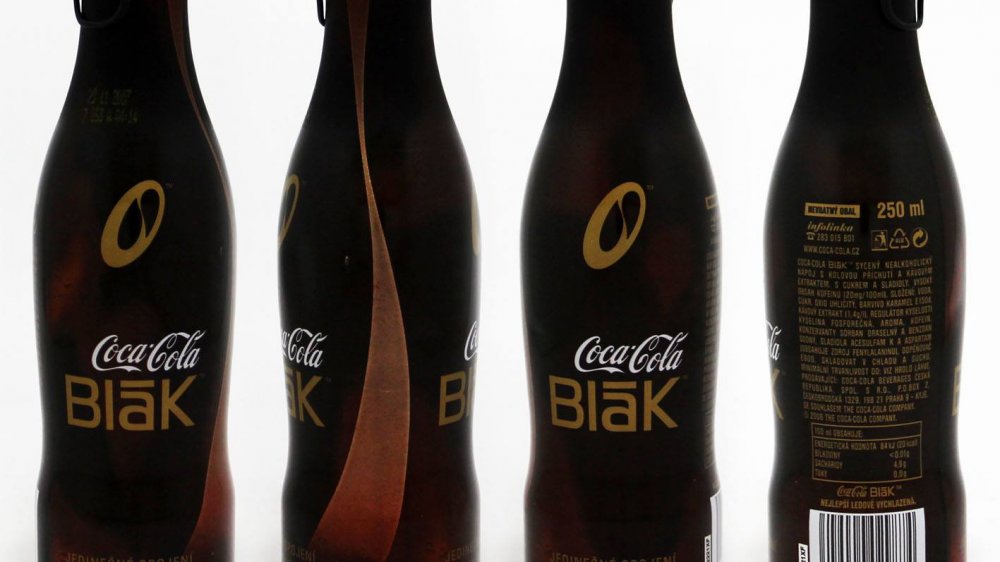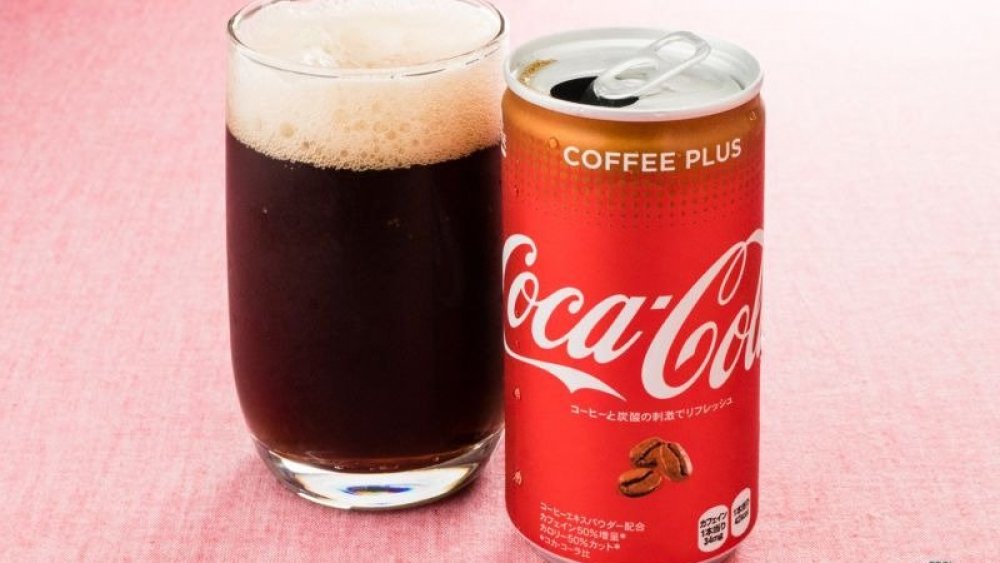The Facts Behind Coca-Cola Blak's Disappearance
Beverage makers are always trying new things. Sometimes, one big soda company attempts to cut into the business of the other, as when Coca-Cola introduced Surge in 1997 to compete with PepsiCo's Mountain Dew. (By the way, Surge lost.) Other times, companies try to ride a trend, as when PepsiCo introduced Pepsi A.M. in the 1980s in response to declining coffee consumption. It's hard to say what motivated Coca-Cola to introduce a Coke-coffee fusion called Blak in 2006. Coke pulled the plug on Blak after just 17 months, and soon after it disappeared altogether from U.S. store shelves (via CSP). Blak's once-flashy promotional website has been taken over, strangely, by someone offering consumer tips.
Years later, a Coca-Cola executive said Blak failed because it "was a trend before its time" (via CNN). Then again, it might have been about a decade behind the curve. Pepsi Kona was the leading entry in a flurry of coffee-soda drinks introduced to the market in the mid-1990s (via BevNET). Whether Blak was introduced before its time — or after — several factors likely contributed to its demise.
Coke reps said Blak's taste was 'not for everyone,' and they were right
Any discussion of Blak's disappearance should start with the fact that people didn't like the way it tasted. Coca-Cola decided to split the difference in calories between diet and regular sodas, sweetening Blak with a mixture of high-fructose corn syrup and the zero-calorie artificial sweeteners aspartame and acesulfame potassium (via just-drinks). The result was a syrupy-sweet drink with a double whammy of bitterness in the aftertaste, which came from the coffee extract and the aspartame. BevNET predicted Blak's failure as soon as it was launched, calling the aftertaste "brutal."
"It is not for everyone," a Coke marketing executive said when Blak was launched. Coca-Cola was aiming for the more discerning palates of people in their 20s and 30s who were "looking for a pick-me-up at any point in the day," another Coke spokesperson told The Baltimore Sun.
In addition to taste issues, Blak was having an identity crisis. Was it a soda, a coffee drink, both, or neither? Just a few months after Blak's launch, a Wall Street analyst said consumers "are still deciding whether the product is a cola or a coffee," and a lot of them thought Blak was too expensive. The beverage was on store shelves next to other bottled coffee drinks and was priced accordingly — as much as $1.89 for a single eight-ounce bottle (via CSP).
Will Pepsi beat Coke in the race for a good coffee-cola fusion?
Maybe Blak was a drink before its time, after all. Coca-Cola is getting back in the saddle with a new coffee-cola fusion drink that has a more straightforward name: Coca-Cola Plus Coffee. While it's offered internationally, it has yet to hit U.S. markets, and the COVID-19 pandemic has caused Coca-Cola and other food and beverage companies to cut back on the number of products they offer, rather than expanding, as reported in The Wall Street Journal (via Forbes). Some products under development are now on hold, to keep things simple for food and beverage producers as they deal with supply-chain disruptions during the pandemic.
PepsiCo was set to launch its own soda-coffee fusion called Pepsi Café in April 2020 (via Food & Wine). The drink apparently never hit the market that month, which was the height of the pandemic lockdown. In any case, Coca-Cola better be on its toes in the race toward a coffee-cola fusion that actually tastes good. Food & Wine got an early taste-test of Pepsi's version and declared that it "delivered on the coffee-meets-cola concept" with a "pleasant coffee aftertaste." Hear that, Coke? This time, you're going to have to do better than "brutal."


